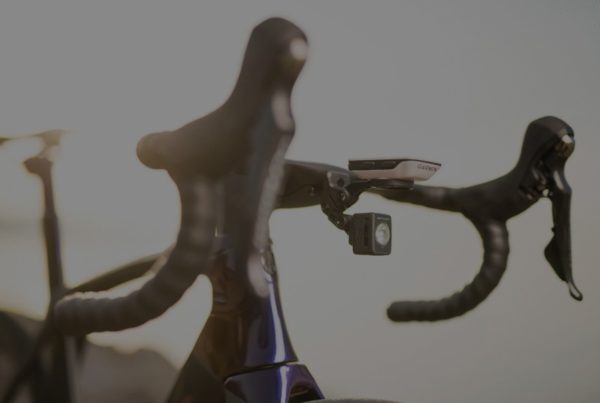Dr. Ed Farrar
Last week, I wrote “we all feel the pain when one of our own is injured.” As I wrote those words, one of our own, Dr. Ed Farrar, lay in critical condition at Central Washington Hospital in Wenatchee, Washington, the victim of a head-on collision with an automobile. Dr. Farrar is well-known in cycling circles, both as a dedicated and enthusiastic cyclist in his own right – he helped found Wenatchee Valley Velo cycling club – as well as a doctor who freely gives of his time and medical knowledge to help his fellow cyclists. He also just happens to be the father of Garmin-Chipotle cyclist Tyler Farrar.
It began the morning of October 22; Dr. Farrar, an orthopedic surgeon, was on his daily morning ride, before beginning his normal day’s routine of surgeries and patient visits. Dr, Farrar was riding uphill on Skyline Drive in Wenatchee; it was 7:15 A.M. Approaching him from the opposite direction was a 2001 Ford Crown Victoria driven by a private security guard on patrol. The security guard’s clipboard fell to the floor, and as he reached to retrieve it, he took his eyes off the road. He drifted across the center line on a curve, hitting Dr. Farrar head-on. Dr. Farrar, described by Andy Dappen of Wenatchee Outdoors as a “real safe rider,” sustained serious injuries in the collision – 15 broken ribs, several vertebral fractures, which were described by his doctor as a “serious spine injury,” as well as various other injuries.
Shortly after the collision, Wenatchee Police reported that either negligent or reckless driving charges might apply to the driver. Within a week, the police had settled on a citation for negligent driving in the second degree; as Wenatchee Police Sgt. Cherie Smith explained, “Reckless driving requires intent. This man, as far as we can tell, did not intend to hurt anybody.”
To see if this is accurate, let’s look at the difference between negligent driving and reckless driving. In Washington, negligent driving is a traffic offense, carrying a penalty of a $250 fine, while reckless driving is a criminal offense – a gross misdemeanor, one level below a felony – carrying a penalty of up to a year imprisonment and a $5,000 fine. These two offenses are entirely separate from any civil claims – a “lawsuit” – that might be filed.
In order to understand the difference between negligent driving and reckless driving, it helps to imagine a continuum of dysfunctional driving behavior. At one end of that continuum is negligent driving. The security guard who collided with Dr. Farrar was cited for negligent driving in the second degree; this is defined as operating a motor vehicle “in a manner that is both negligent and endangers or is likely to endanger any person or property.” Although injuries resulting from negligent driving are unintended and thus “accidental,” rather than intentional, the negligent driver is still held accountable if negligence is proved, whether in traffic court or in civil court. At the other end of that continuum are acts intended to cause harm – for example, assault in the first degree, which is defined as using any force or means likely to produce great bodily harm or death to assault another, “with intent to inflict great bodily harm.” If a driver were to operate his vehicle in such a way as to exhibit the “intent to inflict great bodily harm,” that driver might be charged with assault in the first degree.
Falling in between these two extremes are acts that involve more than simple negligence, but fall short of an actual intent to cause harm. One of these “in-between” acts is reckless driving, which is defined as driving a vehicle “in willful or wanton disregard for the safety of persons or property.” This means that the disregard for the safety of persons or property must be either “willful,” or “wanton.” “Willful” means “acting intentionally and purposely, and not accidentally and inadvertently.” “Wanton,” on the other hand, means “acting intentionally in heedless disregard of the consequences and under such surrounding circumstances and conditions that a reasonable person would know or have reason to know that such conduct would, in a high degree of probability, harm a person or property.” In other words, reckless driving means that the driver is intentionally driving in a manner that the driver knows has a high degree of probability of harming somebody. The driver isn’t actually attempting to harm anybody, but the driver is indifferent to the harm that the driver knows is highly probable. If the reckless driver does injure somebody, the driver can be charged with vehicular assault.
Now let’s go back to what the Wenatchee Police had to say about the citation issued: The driver wasn’t charged with reckless driving, because, as the police put it “Reckless driving requires intent. This man, as far as we can tell, did not intend to hurt anybody.” While it is probably true that the guard didn’t intend to hurt anybody, the Wenatchee Police are clearly confused about the meaning of “intent” in the statute, erroneously believing that the law requires “intent to harm,” when what it actually requires is “intentional disregard of the safety of persons or property.” ((All that said, could the prosecution get a conviction on a reckless driving charge, or even vehicular assault? Possibly. Remember, the collision occurred when the driver took his eyes off the road as he was approaching a curve. That may rise to the level of recklessness, but it would be for a jury to decide.
More to the point, traffic court – and even criminal court – isn’t where our society usually dispenses justice for victims of traffic accidents. Instead, justice is more often dispensed in the civil courts. Thus, while it’s true that cyclists are often justifiably outraged whenever a serious injury or death results in a “slap on the driver’s wrist” of $250, it’s also true that the “slap on the wrist” is often just the beginning of the negligent or reckless driver’s encounters with the legal system.
In Dr. Farrar’s case, another legal issue is raised – if the report that the security guard was on patrol is accurate, the private security firm can be held liable for the negligent actions of its employee. This will likely mean that an insurance policy with higher limits than most drivers carry is in effect. As we saw last week in The aftermath, many drivers are underinsured. If one of these underinsured drivers seriously injures a cyclist, the cyclist may be unable to recover damages sufficient to compensate for the cyclist’s injuries. In this case, the security firm is more likely to be adequately insured, which is one less worry for Dr. Farrar.
Here’s the thing about all of these legal issues, though – while they will be important at some point down the line, they’re just not that important right now – at least, not to me. What’s most important right now is that an injured cyclist is in the hospital, critically injured. And as we read last week, the road to recovery is a difficult one, filled with challenges. If there’s any ray of hope in that, it’s in the knowledge that athletes – all of us – thrive on challenges.
While the road to recovery is Dr. Farrar’s to ride, it’s a journey we can all support him on. This Sunday, November 9, Wenatchee Valley Velo will host a “Rally for Ed,” which will include a ride to the rally site at or near the Central Washington Hospital; the ride will be led by Tyler Farrar. Details will be available on the Wenatchee Valley Velo website; inquiries for details on the ride and rally can be made at wenatcheevalleyvelo@yahoo.com. For updates on Ed’s recovery, well-wishers can visit his page at CaringBridge. As I’ve said, we all feel the pain when one of our own is injured; whether you can show support for Ed by joining in his ride, or simply by keeping him in your thoughts, I hope everybody will join me in wishing Dr. Farrar a full and speedy recovery.
Bob
(Research and drafting provided by Rick Bernardi, J.D.)
I’d like to thank everybody who has contacted me to request my appearance at their event. I will be speaking as extensively on “Bicycling & the Law” this year as my practice will allow, and will make plans to appear before any club, bike shop, or other engagement that is interested in hosting me. If you would like me to appear to speak at your event or shop, or to your club or group, please drop me a line at bookbob2speak@gmail.com (and if you would like to contact me with a question or comment not related to my speaking tour, please drop me a line at mionskelaw@hotmail.com). I’m looking forward to meeting as many of my readers as possible this year.



